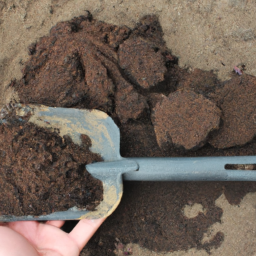Improving Sandy Soil Gardening Tips
How To Improve Sandy Soil For Gardening
How to Improve Sandy Soil for Gardening
What Is Sandy Soil?
Sandy soil is a loose, grainy soil composed of large particles, and it is one of the most common soil types in the world. It has very few nutrients, allowing water to pass through it quickly and washing away the little that it does have. Dry and loose, sandy soil is also difficult to hold together, making it difficult for oxygen to circulate among roots and impairing a plant's ability to take up water and nutrients. Sandy soil is best suited for certain types of plants, such as cacti and other succulents.
Understanding Your Soil Composition
In order to improve sandy soil for gardening, you first need to understand what kind of soil you are dealing with. Grab a handful of soil and look at it closely. Sandy soil feels rough, gritty, and grainy. Squeeze it into a ball and then break it apart, and it should fall apart easily. It also should not form strong clumps. To determine more precisely how much sand is in your soil, you can have it tested in a lab.
Nutrient Additives
The most effective way to improve sandy soil for gardening is to add an organic material for nutrition. These materials, called nutrient additives such as compost, leaf mold, and manure, help introduce organisms into the soil, attract earthworms, and provide food for beneficial microorganisms. Nutrient additives also help improve the structure of sandy soil while providing it with essential nutrients, such as nitrogen, phosphorus, and potassium.
Mulching
Mulches are organic substances like compost, shredded leaves, straw, and bark that are spread on the surface of your soil for various purposes such as insulating your plants from heat and cold, conserving moisture, and keeping weeds from germinating. Mulching also helps bind together sandy soil particles, improves the soil's structure, and helps it to hold more water and nutrients.
Water Holding Agents
Adding water holding agents is another way to improve sandy soil. A water-holding agent can be as simple as compost or manure, or you can use additives like liquid seaweed or hydrogels. Water-holding agents work by absorbing large amounts of water, thereby improving the soil's water retention capacity.
Soil Amendments
Although soil amendments such as lime, gypsum, sulfur, and potassium help improve sandy soil, they should be used conservatively as they can affect soil pH and disrupt the delicate balance of nutrients in the soil. Soil amendments should be used according to soil test results and application instructions.
Irrigation
Because sandy soil holds little water and nutrients, it is important to use an irrigation system to water your plants. This can be as simple as hand watering or as complex as installing a drip irrigation system. Drip irrigation is the most efficient way to water plants and helps ensure that the plants get the water they need.
Insights
Improving sandy soil for gardening requires understanding the soil composition and then using different methods and techniques. Nutrient additives, mulching, water holding agents, and soil amendments can all be used to improve sandy soil's structure and water retention capacity. Additionally, an effective irrigation system is a must. By following these tips, you can create healthy, nutrient-rich soil for your garden.

Previous Page
Next Page
